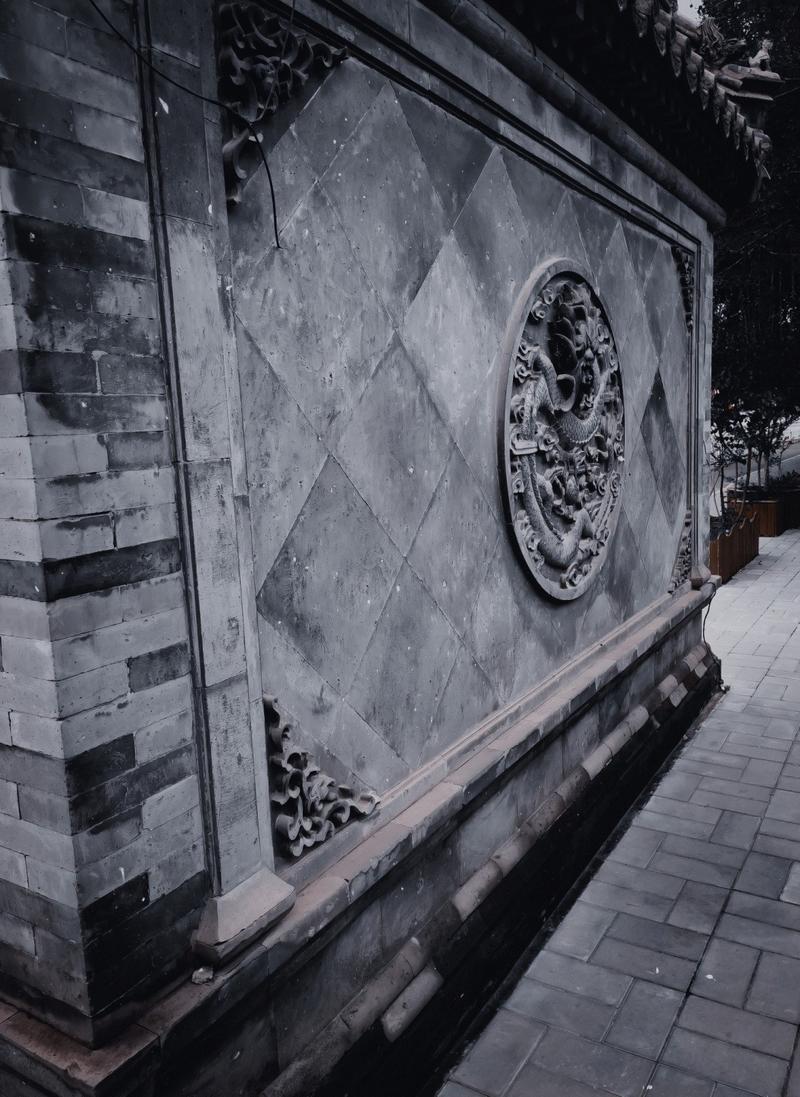 Zhaobi on Huihe South Street in Beijing. (MICHAEL RHYS CARD / CHINA DAILY)
Zhaobi on Huihe South Street in Beijing. (MICHAEL RHYS CARD / CHINA DAILY)
The ancient buildings of China, with their vibrant colors and dazzling architecture, offer us a compelling snapshot into the country's long history. However, there is another facet of these buildings that is often overlooked-a seemingly arbitrary segment of wall, situated just outside the entrances.
You would be forgiven for not giving these simple structures a second thought, as I did the first time I spotted one. However, these unassuming walls have a fascinating narrative spanning thousands of years.
Zhaobi, or "spirit walls", have a long and storied history, and though their aesthetics haven't altered much since their inception, their purpose and meaning has evolved over the course of history.
Zhaobi can be found outside the entrances of various buildings and, in their earliest form during the Western Zhou Dynasty (c.11th century-771 BC), were constructed to serve the function of status symbol. They were reserved for only the highest members of society, noblemen, dukes and princes. Seeing zhaobi outside a building would let passersby know that this is the residence of someone of extreme importance, while also serving the practical function of acting as a form of privacy by blocking the entrance from any prying eyes.
By the time of the Tang (618-907) and later Song (960-1279) dynasties, and the rise of scholars and the literati to greater prominence in society, there was less exclusivity attached to who could build zhaobi, but more importantly, there was also a shift in the meaning and purpose of the walls. Instead of representing hierarchy, zhaobi took on a more esoteric purpose, coming to play a role in the principles of feng shui, a practice that focuses on achieving harmony and balance in all things.
It was believed that, as well as functioning as a physical barrier for the sake of privacy, zhaobi would act as a deterrent against gui, or "wandering evil spirits", that would attempt to enter a home. Being unable to turn corners, zhaobi would thwart such nefarious phantasms. As well as offering this spiritual protection, their location would allow for better flow of qi, or vital energy, helping to conserve it in the building.
Moving further forward in time, zhaobi became more of a form of artistic expression and creativity, with poetry, paintings and characters representing luck and good fortune appearing on the walls, with families using zhaobi as a canvas to tell their family history and achievements.
In more modern times, zhaobi, or often in this case yingbi, which are similar structures found just inside the threshold, have been adopted by many businesses that practice the principles of feng shui. Such a structure, it is believed, can help with the flow of qi through the office, helping to bring good luck and wealth. And who's to say it doesn't.
But what can be said for sure is that these compelling structures, like all pieces of history, give us a brief look at life at a particular time. Whether that is a physical embodiment of someone's position in society, a tool for retaining qi and defending against evil spirits, or to recount the exceptional deeds of a family's past, they stand as a true representation of the resilience and development of Chinese history and architecture.
By evolving and adapting their function, zhaobi have been silent spectators to China's long history, and those we see today are much the same as they would have been thousands of years ago. This longevity through transformation is much like China itself, a country that pays great deference toward its history, but also embraces modernization and progress.
These walls often go overlooked in favor of the grander buildings they are protecting, but their continued existence seems to be more than just to retain the ethereal qi, but to bear witness to the continuous story of China.
Contact the writer at michaelrhyscard@chinadaily.com.cn


